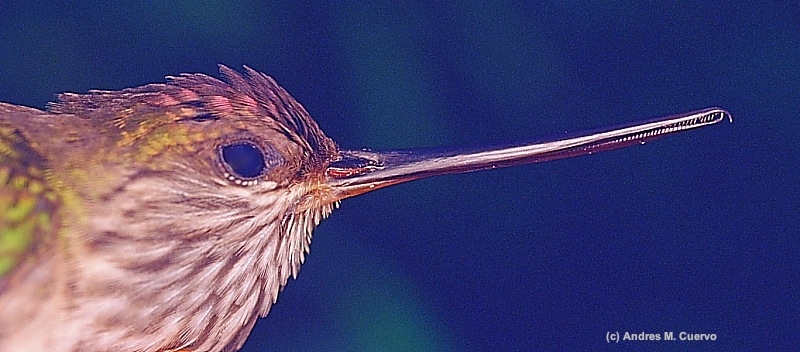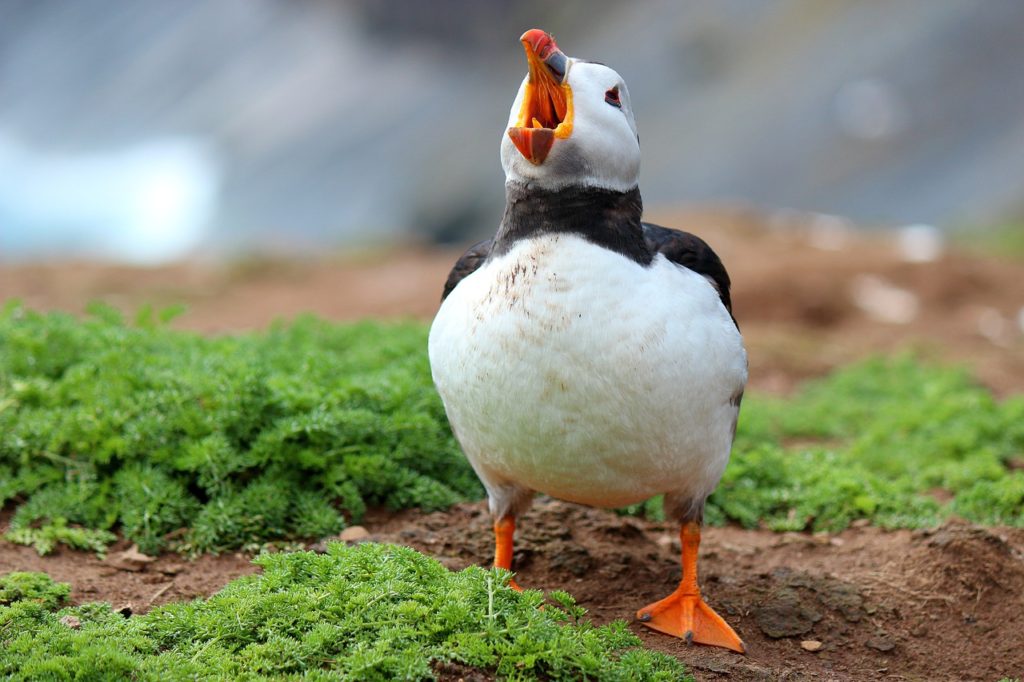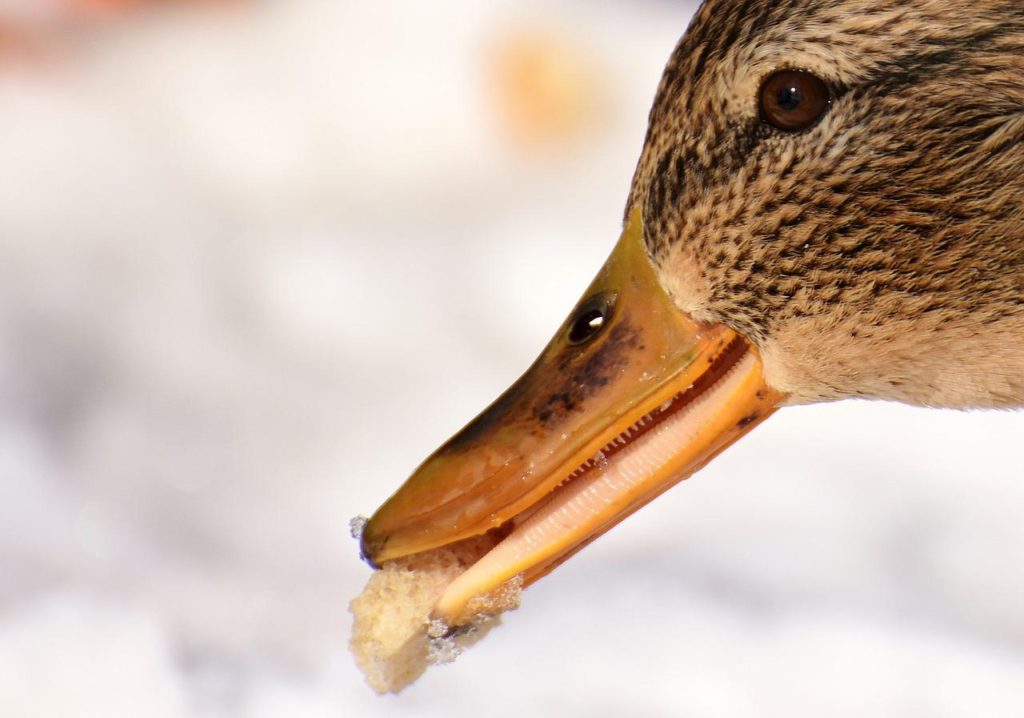
Birds do not have teeth. However, there are quite a few that really look like they do! These birds have evolved special beaks which help them to perform important functions. So here are some of the most amazing birds with “teeth,” and what you’ll want to know about them.
Toucan
Toucans have large beaks that depending on the species can be more than half of their entire total length. Their huge beaks have forward-facing serrations that look like teeth. And because of this, it was originally believed they were mostly carnivorous and ate fish.
However, while they do eat insects, eggs, and the nestlings of other birds, toucans mainly eat fruit. Their long beaks allow them to grab fruit on faraway branches and those jagged tooth-like serrations help them to peel it.
Greylag Goose
This large gray goose species is the ancestor of most breeds of domestic geese. While they may look scary, the pointy serrations on their beaks actually function to help the geese to uproot and tear up grass. The serrations are known as tomia and are made of cartilage.
When their beaks are open, greylag geese also appear to be birds with teeth on their tongues! That’s because, on their tongues, they have spiny papillae which are sharper yet not as hard as the tomia on their beaks. Their spiny tongues help them to shred and maneuver their food before swallowing it.
Canada Goose
This recognizable and common goose species has tomia running down the sides of its beak to help it to grip and cut vegetation. These tooth-like projections also help it to filter feed and even crush its food.
Canada geese are actually considered to be pests in many areas because flocks will often feed on grass and make quite a mess with the waste they produce. Golf courses, public parks, swimming pools, and docks are some of the most common places these toothy birds can be a nuisance.
Tooth-Billed Pigeon
Despite being the national bird of Samoa, this is not a bird you’re likely to see. That’s because due to overhunting and habitat loss the tooth-billed pigeon is nearly extinct.
Like other birds with teeth, the tooth-billed pigeon actually has a specially adapted beak. Its unique orange-colored beak has a jagged tip which it used to saw through tough seeds. Because it is closely related to the extinct dodo bird, the tooth-billed pigeon is also known as the “little dodo”.
Totodu74/Wikimedia Commons/CC BY-SA 3.0
Tooth-Billed Hummingbird
The fast-flying tooth-billed hummingbird is quite large for a hummingbird species, and it has a very long and straight beak. Males have a small hook at the tip of their beaks and even more prominent tooth-looking serrations than females.
They also have brighter plumage than the females as well. In addition to feeding on nectar from flowers, the tooth-billed hummingbird’s long serrated beak helps it to catch small insects and spiders.
Andres Cuervo/Wikimedia Commons/CC BY-SA 2.0
Puffin
Puffins are stocky birds with short wings, a large beak, and mostly black or black and white plumage. These seabirds are known for holding large numbers of fish crosswise in their beaks while hunting for more. One reason they are able to accomplish this is that they have jaws that come together in a parallel manner and exert equal amounts of pressure along the entire length of the beak.
Another is that inside their beaks they have tooth-looking spines called denticles. The denticles point towards their throat And by pushing the fish against their denticles with their tongues, puffins can swim underwater and catch multiple fish without losing their grip on the fish they are already holding.
Seagull
If you were to see a seagull open its beak wide enough you’d probably think that these are birds with teeth. That’s because similar to puffins, they also have denticles to help them hold onto their food.
These omnivores are adaptable and opportunistic feeders and will eat just about anything from fish to garbage. And because seagulls can actually unhinge their jaws, it allows them to get even the largest of meals down their gullet.
Tooth-Billed Bowerbird
This species is also called the tooth-billed catbird. And it gets the “tooth-billed,” in both of these names because of its notched tooth-like beak. These notches help it to cut young leaves which along with fruit make up the majority of its diet.
Male tooth-billed bowerbirds also use the notches in their beaks to gnaw through the stems of leaves that they use for a very important purpose, their mating ritual. They collect the leaves and then manipulate them into a decorative stage with the pale underside of the leaves facing up to attract a mate.
Francesco Veronesi/Wikimedia Commons/CC BY-SA 2.0
Mallard
You don’t have to go far to see birds with teeth. A trip to the local duck pond will often do because even mallards have toothy-looking beaks.
That’s right if you look closely mallards along with most other types of ducks have lamellae, comb-like projections that run down the sides of their beaks. The lamellae are actually part of the beak and function to strain small pieces of plant matter and other food items from the water just like a filter.
Merganser
Different from other types of ducks, mergansers don’t have lamellae. That’s because they eat fish. So instead they have thin, sharp, serrated beaks. The intimidating serrations help to grasp the fish and ensure that they don’t escape. These are diving ducks that hunt fish below the surface of the water. For this reason, they are also commonly called “fish ducks”.
Archaeopteryx
These were prehistoric birds with teeth, real teeth. Archaeopteryx is considered to be the first bird and therefore represents the transitional form from reptiles to birds.
In addition to a full set of real teeth, this species had feathers, 3 claws on each wing, and a mixture of bird-like and reptilian features. It is believed that it was possibly able to glide or even fly. Archaeopteryx lived around 150 million years ago and was about the size of a common raven.
Start Shopping for Birding Supplies!
How Does A Heron Catch Fish?
The great blue heron is well-known for its looks but also its fish-catching abilities. Whether in the wild or someone’s backyard pond these large birds are master hunters. So how does a heron catch fish? Here’s what you’ll want to know. Built For Success While herons...
What Direction Should A Bat House Face?
Buy on Amazon Bats are very particular when it comes to whether or not they will move into a bat house. One of the most important factors is the temperature inside, which will be strongly influenced by the direction that the house is facing. So what direction should a...
When To Put Up A Bat House
Buy on Amazon Bats can be a big benefit to your yard. But they can be picky when it comes to where they actually decide to roost. Knowing when to put up a bat house can help to tip the odds in your favor. Basic Seasonal Bat Behavior Many people don’t realize that in...
Bat Attractant: The Secret Weapon For Bat House Success
Buy on Amazon Purchasing a bat house is easy, however, having a colony of bats take up residence inside it is sometimes another story. To tip the odds in your favor using bat attractant can help. Here’s what you’ll want to know when considering using it. Bat House...
How To Attract Bats To Your Bat House
Buy on Amazon Having bats in your yard offers many fantastic benefits. So it’s no wonder that more and more people are installing bat houses in an attempt to get them to stay. However, you’ll first need to know how to attract bats to your bat house if you want them to...
The Buzz About Bee Gardens
Chances are if you’ve been paying even a little bit of attention, you’ve heard about the “beepocalypse.” Depending on the source, you’ve likely seen varying levels of concern. While some experts are simply following the phenomenon, others are downright alarmed....
What Does A Bat House Look Like?
Buy on Amazon Bat houses are shelters made specifically for bats. These flying mammals have special needs that houses are designed to meet. So what does a bat house look like? Well, read on and find out! Bat House Designs Houses for bats actually look like boxes. For...
What Is A Bat House?
Buy on Amazon What is a bat house? And better yet, why would you want one on your property? These are both commonly asked questions. Whether you’re just curious or have always wanted to have bats in your yard here’s what you’ll need to know. Bats are nocturnal...
The Top Bat House Benefits
Buy on Amazon A bat house is a specially designed shelter for bats. It provides them with a safe and convenient place to sleep. While they are great for the bats, there are many bat house benefits you can enjoy as well when you have one in your yard. Keep Bats Out Of...
Where To Put A Bat House
Buy on Amazon Where to put a bat house is an important decision. If it’s not in an appropriate spot, you may be putting your resident bats in danger. Or you may end up with an empty house since no bats are interested in living in it. So you’ll need to know a few...
Beneficial Garden Insects And Creatures Often Confused For Pests
There are many animals that we consider to be pests. However, many of them actually perform critical tasks and help to control the populations of much more devastating species. The following beneficial insects and creatures are ones you’ll want to keep around....





















